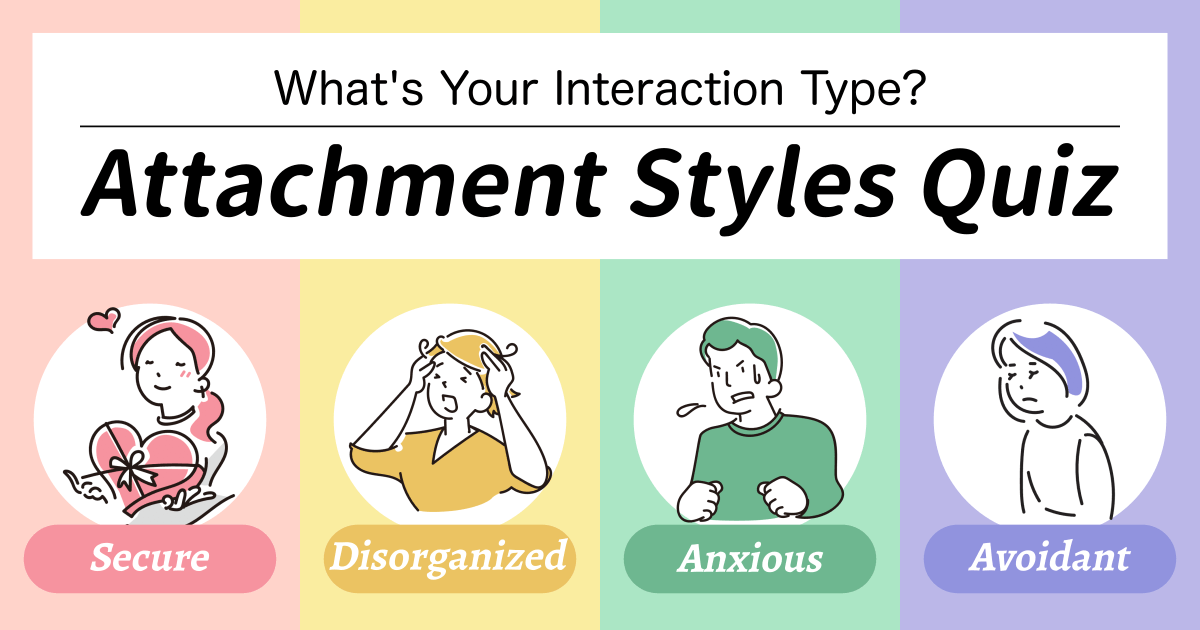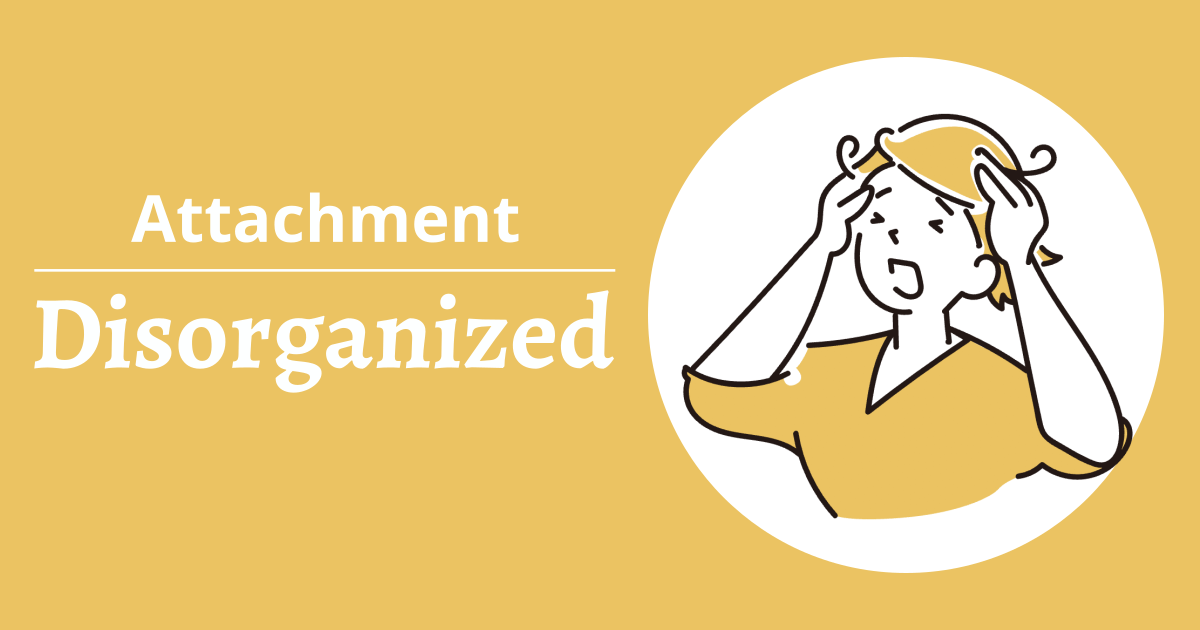
Ever wondered about the way you connect with the people around you? By taking this attachment style quiz, you can gain insights into your interpersonal relationships and identify which of the four attachment styles best describes you. Find out which type you are.
Attachment styles are a psychological concept that explains how early relationships with parents or caregivers shape an individual’s later interactions with others. Introduced in 1958 by British developmental psychologist John Bowlby, attachment styles fall into four main types, each representing a different pattern of relating to others.

The secure attachment style is characterized by trust, a sense of security, and a strong connection with others. People with this style are good at balancing their own needs with those of others, and they respond sensitively to others' emotions. This allows them to build stable, healthy relationships. They learn from past experiences, communicate effectively, and maintain self-worth while deepening their bonds with others, leading to more satisfying relationships.

The avoidant attachment style tends to avoid intimacy and dependence, often due to past experiences that have caused fear or anxiety around relationships. People with this style emphasize independence as a form of self-protection, which can push others away and create a sense of isolation. While they may feel lonely and anxious, they avoid closeness to protect themselves, which can lead to psychological challenges.

The anxious attachment style is marked by constant worry and tension, often driven by low self-esteem. People with this style fear rejection or abandonment and may struggle with close relationships due to past emotional wounds. They seek approval from others and often feel lonely, and when relationships become unstable, their self-worth further declines. Although they may be dependent on others, they also struggle to fully accept support, which can intensify their anxiety. It's important to learn ways to build secure relationships through appropriate support.

The disorganized attachment style is characterized by a contradictory desire for closeness combined with fear of rejection or hurt. Often formed by inconsistent or frightening experiences in childhood, people with this style may feel anxious as intimacy deepens, leading them to withdraw from others. Fear of rejection causes them to suppress emotions and avoid deep connections, which can result in unstable relationships. By increasing self-awareness and seeking therapy, individuals can work toward adopting a more secure attachment style.
A. The test provides general tendencies but does not guarantee 100% accuracy. It is a useful tool for understanding your own tendencies, but final insights should be deepened through self-reflection and discussions with a professional.
A. Attachment styles are primarily formed through early relationships with parents or caregivers. However, experiences during growth and significant relationships later in life can either reinforce or modify these styles.
A. Yes, attachment styles can change. By increasing self-awareness and understanding past behaviors and experiences, you can learn new ways to build healthier relationships. Seeking professional help can also facilitate the process of improving attachment styles.
A. An anxious or avoidant attachment style can be seen as a starting point for personal growth and improving relationships. Through therapy or counseling, individuals can address issues related to their attachment style and work toward developing a more secure attachment style.
A. The test results can help improve communication and mutual understanding in partnerships. By understanding each other’s attachment styles, partners can better address challenges and build deeper trust.
A. No, attachment styles influence not only romantic relationships but also friendships, family relationships, and even workplace interactions. They deeply affect how we connect with others, trust, and communicate.
A. The attachment style test is generally aimed at adults or teenagers, as attachment styles form in childhood but evolve as one grows older. Testing at an age when self-understanding has matured tends to be more effective.
A. Yes, the attachment style test can be a helpful tool for self-understanding and improving relationships. Recommending it to friends, family, or partners could help foster mutual understanding and strengthen relationships.
A. It's natural to feel that the result doesn’t fully match. This doesn’t necessarily mean the test is wrong. Use the results as a guide for deeper self-reflection, and if needed, consult with a professional for a more detailed analysis.
Attachment theory applies not only to humans but also to animal relationships, particularly among primates and between pets and their owners. Stable attachment bonds can be observed in these relationships as well.
Attachment styles are primarily shaped by early life experiences but are also influenced by parental caregiving styles and environmental factors, not just genetics.
Attachment styles are not fixed and can change throughout adulthood, particularly through significant relationships. For example, someone with an avoidant style may shift toward a secure attachment in a stable relationship.
The way attachment styles manifest varies across cultures. For instance, in collectivist cultures, avoidant behaviors may be less noticeable due to societal expectations and values.
Attachment styles also affect teacher-student relationships. A teacher with a secure attachment style is more likely to provide better support and understanding to students, creating a positive learning environment.
Partner attachment styles influence each other. For example, someone with a secure partner may gradually adopt more stable behaviors even if they originally have an anxious or avoidant style.
Attachment styles impact stress responses. Secure individuals tend to handle stress more flexibly, while those with anxious or avoidant styles may be more prone to stress and overreact.
Many movies and literature depict attachment styles in characters, influencing their development and the plot. For instance, a character who avoids intimacy or is overly dependent on others often reflects their attachment style.
Attachment theory was first proposed in the 1950s by British psychoanalyst John Bowlby. After World War II, Bowlby studied war orphans and focused on how children form strong emotional bonds with their parents or caregivers. He believed that these 'attachments' formed in childhood lay the foundation for mental health and interpersonal relationships.
Bowlby’s theory was further developed by Canadian psychologist Mary Ainsworth in the 1960s. Ainsworth conducted the 'Strange Situation Experiment,' which provided empirical support for classifying attachment styles. In this experiment, infants’ responses to separation and reunion with their mothers were observed, leading to the identification of three styles: secure, avoidant, and anxious.
In the 1970s, attachment theory expanded further as researchers began studying its effects in adulthood. It was shown that attachment styles formed in childhood also influenced adult romantic relationships and other social interactions.
In the 1980s, researchers refined the classification of attachment styles. Mary Main and Judith Solomon introduced the 'disorganized attachment style,' characterized by contradictory behaviors of seeking closeness while simultaneously avoiding it.
Since the 1990s, attachment theory has been widely applied in various fields, including clinical psychology, education, sociology, and neuroscience. Research has explored how attachment styles contribute to mental health, child development, and learning. Attachment theory is also used in areas like adoption, couple’s therapy, and education.
Today, attachment theory is recognized globally, with researchers continuing to study how it manifests across different cultures and environments, advancing the field further.